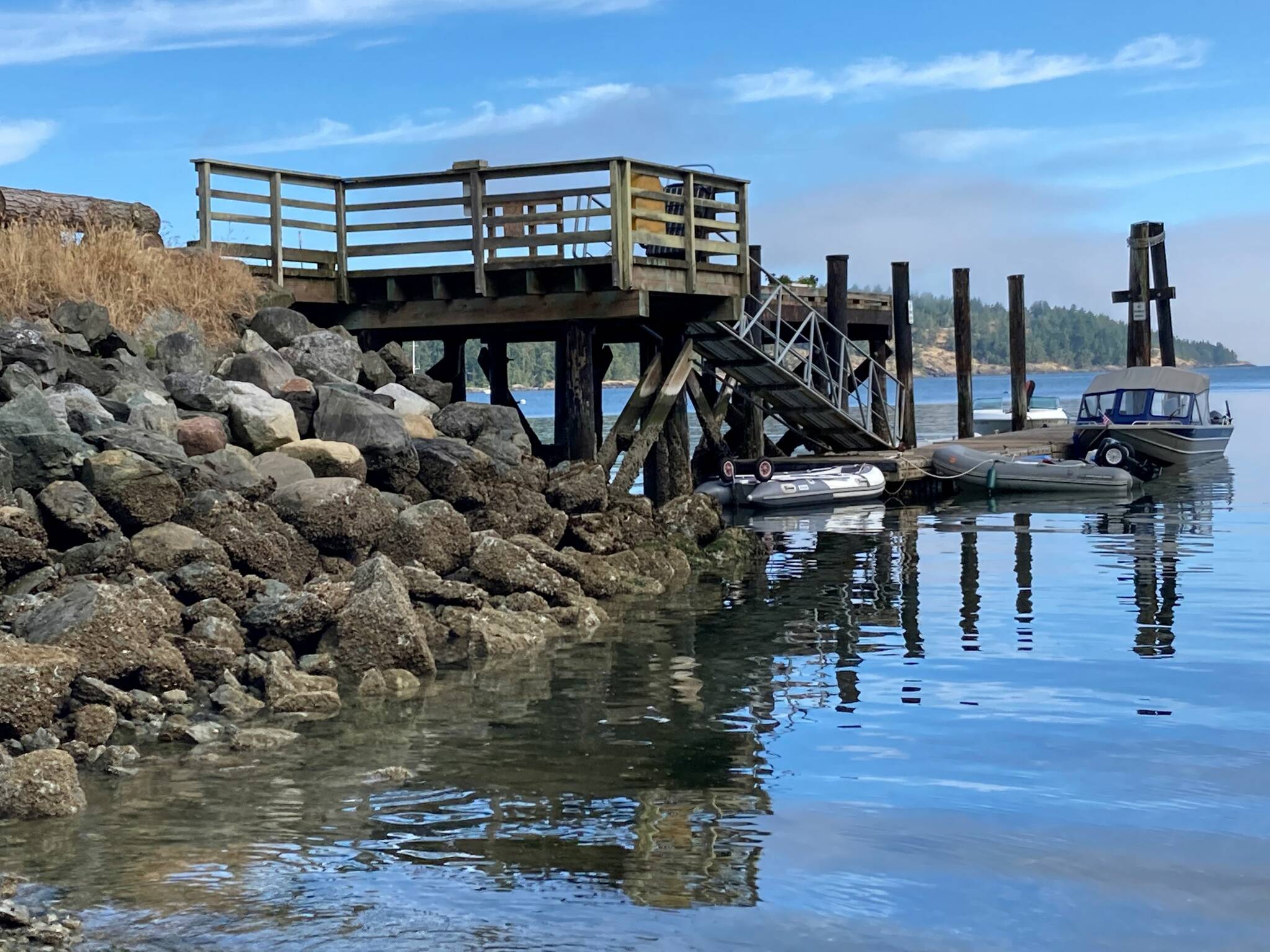Submitted by San Juan County.
San Juan County is contracting with Environmental Science Associates (ESA) to complete a county-wide assessment of creosote pilings. Addressing creosote-treated materials in the marine environment is a priority for the County, and this important step will help develop a plan for their removal.
“Clean marine waters and healthy, vibrant wildlife populations are essential to the well-being of island inhabitants and the regional economy,” said Dr. Frances Robertson, the County’s Marine Program Manager. “Protecting these ecosystems is vital to Puget Sound Recovery.”
Creosote-treated wood pilings are a significant source of contamination to nearshore environments of the Salish Sea. As creosote leaches into the marine environment, it impacts forage fish spawning habitat, valuable eelgrass beds, and other nearshore habitats and species. Creosote vapors also pose a risk to human health. HunterBay-SJC Public Works
What is a creosote piling assessment?
This summer’s assessment is building off the shoreline inventory effort completed by Friends of the San Juan’s in 2009. Those surveys identified 378 creosote pilings and 356 docks with creosote along the shorelines of the San Juans. This summer, the County’s marine program and ESA will be undertaking boat-based surveys to complete an inventory and assessment of in-water creosote pilings. They will be revisiting the sites identified in 2009 to determine what has been removed since 2009 and what remains. The team will focus attention on publicly owned sites to determine whether the pilings could be removed as part of a stand-alone restoration project or replaced as part of upgrades to an existing facility or structure and lay out a roadmap for permitting these different avenues of removal.
Why it is important to remove creosote:
This project will allow the County and landowners to plan for and potentially expedite piling removal. Removing creosote pilings will:
Remove a source of toxic hydrocarbon contamination to the nearshore environment
Improve water quality
Improve conditions for eelgrass habitat
Reduce toxics to forage fish
Protect and promote habitat for rearing juvenile salmon
This will be a significant benefit to the county’s waters that have sustained islanders for generations and the Coast Salish people since time immemorial. The County is made up of 428 islands with over 408 miles of shoreline. There are 80 miles of known forage fish spawning beaches, 22 stocks of Salish Sea Chinook salmon migrate through the islands nearshores, and one-third of all kelp in Puget Sound is found in the San Juans.
“The islands provide critical forage habitat for the endangered Southern Resident Orca,” said Robertson.
This study is a near-term action (NTA) within the Puget Sound Action Agenda, 2018-2022. It is being funded by the US EPA National Estuary Program. To find more information about this project and other County-led creosote removal projects, visit the Marine Resources Committee projects pages (https://www.sjcmrc.org/projects/). If you would like to have any pilings associated with your property assessed for removal, please contact the County’s Marine Project Manager, Dr. Frances Robertson.
Contact: Frances Robertson, Marine Project Manager.



